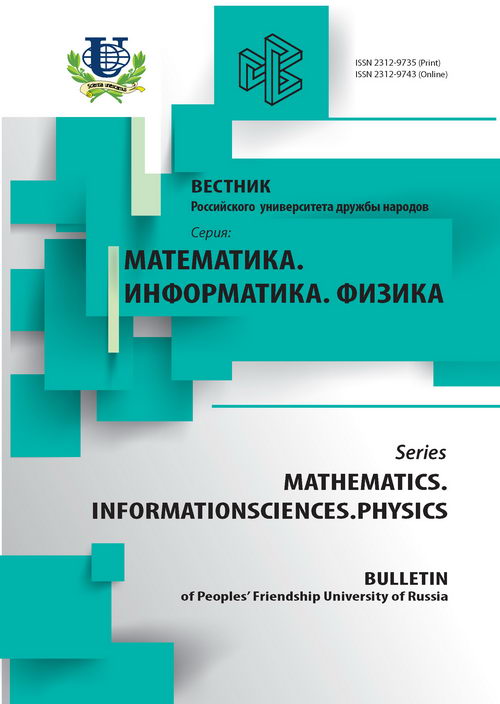The Model of Tunneling of Clusters Through Repulsive Barriers in Symmetrized Coordinates Representation
- Authors: Gusev AA1
-
Affiliations:
- Joint Institute for Nuclear Research
- Issue: No 1 (2014)
- Pages: 52-70
- Section: Articles
- URL: https://journals.rudn.ru/miph/article/view/8254
Cite item
Full Text
Abstract
Formulation of a mathematical model for the system A identical particles with pair interaction of oscillator type in the repulsive barrier potentials in the form of a boundary-value problem for elliptic equations in new symmetrized coordinates, effective methods, algorithms and program complexes for the analysis of its solutions are presented. Reduction of the problem for a cluster of A identical particles to subsystems “(one particle) + (cluster of (A − 1) particles)” and “(a cluster of Ab1 particles) + (cluster of Ab2 particles)” is considered. The solution of the boundary-value problem for a cluster of A identical particles sought the form of an expansion over the cluster (A − 1)-dimensional oscillator basis functions, symmetric and antisymmetric with respect to permutations of A identical particles, i.e. in the symmetrized coordinates representation [Gusev A.A. // Bulletin of PFUR. Series “Mathematics, Information Sciences. Physics”. — 2013. — No 3. — P. 52–67]. The problem is reduced to the boundary value problem for a set of coupled second-order ordinary differential equations with the R-matrix third type boundary conditions in the close coupling channel method. The amplitude matrix of transmission and reflection and the eigenfunctions of the continuous spectrum of the scattering problem with respect to the center of mass are calculated with help of the program complex KANTBP 3.0. The effectiveness of the approach is demonstrated by the analysis of the solutions of the quantum tunneling of clusters consisting of a number of identical particles with oscillator-type pair interaction through a repulsive barrier in the s-wave approximation. The analysis of the effect of quantum transparency, i.e. resonant tunneling of a cluster of several identical particles through the repulsive barriers, which is due to the presence of quasi-stationary states embedded in a continuum is given. To calculate the positions of the energy of quasistationary states and their classification, the algorithm of solving the boundary value problems for elliptic equations in A-dimensional domain of a special type based on the decomposition of solutions A-dimensional oscillator basis is developed. The developed approach and set of programs focused on the analysis of the quantum diffusion of molecules, channeling and tunneling clusters and ions in crystals, as well as tetrahedral and octahedral symmetry of the nuclei.
About the authors
A A Gusev
Joint Institute for Nuclear Research
Email: gooseff@jinr.ru
Laboratory of Information Technologies
References
















